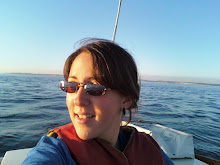 What is it about the waters around Tasmania that makes it so easy for pilot whales to strand? Whatever it is, it's been happening more and more in the recent months as the long-finned pilot whales migrate between Antarctic waters.
What is it about the waters around Tasmania that makes it so easy for pilot whales to strand? Whatever it is, it's been happening more and more in the recent months as the long-finned pilot whales migrate between Antarctic waters.The latest stranding included nearly 200 animals on Naracoopa Beach on King Island in Tasmania. Most of the animals were pilot whales, but a few were bottlenose dolphins. Apparently, bottlenose dolphins and pilot whales often travel together. The two species have overlapping frequency ranges (pilot whales = 1 - 8 kHz, bottlenose dolphins = 0.2 - 160 kHz [pdf]), so it's possible that they could be communicating or even hunting together. It's not common for dolphins to strand, so they may have been reacting with the pilot whales.
As far as I've seen, none of the articles about the King Island stranding spotlight any cause, but most mention that Navy sonar can have an effect on whales in the area. My question is, have there been any sonar activities going on around King Island within the last few months? This seems to signal an increase in strandings, but the articles don't mention any use of sonar nearby.
Alternately, Dr. Vincent Janik, of the Sea Mammal Research Unit of St. Andrews University, has some ideas about fish abundance that may have had some effect, which is definitely worth looking into. Also, the Herald Sun has a slideshow of the volunteer efforts here. It will definitely be interesting to see what, if anything, comes out of all the recent strandings.

1 comment:
Maybe a GPS for these guys would be useful. Can you imagine the manufacturer trying to emulate all of the cetacean dialects?
Post a Comment